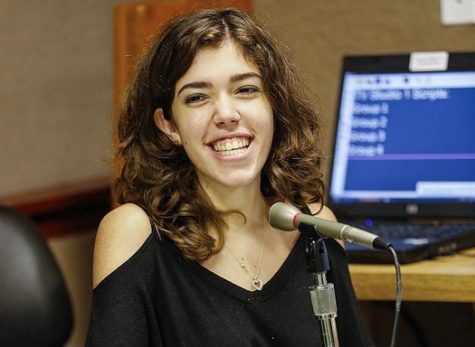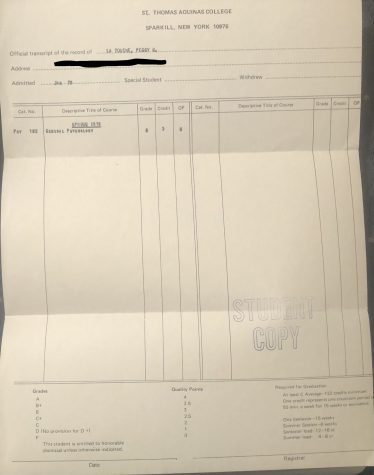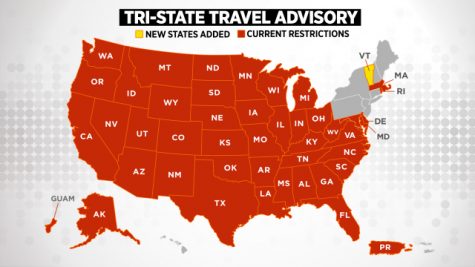STAC ‘pauses’ as it enters third phase
October 9, 2020

St. Thomas Aquinas College will officially enter the third phase of its response to the COVID-19 pandemic, the “Temporary Safety Pause,” after classes end today, according to an email sent by Spartan Startup and signed by Provost and Vice President for Academic Affairs Dr. Robert Murray on Thursday, Oct. 8. This phase will last for at least one week, which definitely affects campus life and instruction held on Tuesday, Oct. 13 through Friday, Oct. 16.
What can students expect from the phase? Dr. Murray wrote in the email that all classes will be held virtually and that students will not be permitted to use the Lougheed Library or Kraus Fitness Center nor can they use outdoor tents or participate in any activity outside with the exceptions of walking and running. He added that students are permitted to stop by the McNelis Dining Hall to pick up food but cannot eat there and that weekly testing provided by Vault Health will continue.
The first two weeks of the semester marked the first phase of reopening and provided in-person classes for some students, including freshmen as well as some science and art students. STAC had begun its second phase during the week of Sept. 21, introducing more classes and students in-person. The modes of instruction varied among students; some had more in-person classes than others and for some students, most if not all of their classes were virtual. Tell The Thoma in the poll below whether your classes were in-person, virtual, or a combination of the two before the beginning of the third phase.
According to Dr. Murray, the third phase was set to start Oct. 13, so it aligns with the original plan in terms of time. However, instead of more classes becoming in-person or classes already being taught in-person remaining that way, every class in this phase will be taught remotely.
Dr. Murray reported in the email that the overall positivity rate for STAC as of Oct. 8 is 0.41 percent, but in response to growing cases in Rockland County, STAC will employ this pause as an extra safety precaution. This rate has since been updated to 0.40 percent as of Oct. 9 on the “Confirmed COVID-19 Cases” Google Sheet on STAC’s website.
According to the Rockland County Coronavirus COVID-19 Dashboard, there are a total of 1582 active cases in Rockland as of Oct. 9 which exceeds the total of 534 active cases reported on Sept. 28. On Sept. 28, the total number of deaths in Rockland attributed to COVID-19 since the beginning of the pandemic was 675, and as of Oct. 9, the number has risen to 679. (Check the Rockland County Coronavirus COVID-19 Dashboard for numbers as they are frequently updated).
As for cases of COVID-19 regarding STAC specifically, eight Vault Health test results out of 1976 total results received came back positive, according to the “Confirmed COVID-19 Cases” Google Sheet on STAC’s website on Oct. 9. Also, out of 196 Vault Health test results received from Oct. 2 through Oct. 8, five have come back positive, with a positivity rate of 2.6 percent for these days. Out of the 209 Vault Health test results received from Oct. 3 through Oct. 9, the number of positive results remains at five, accounting for a 2.4 percent positivity rate for these days. Check this sheet for updates and additional numbers. News 12 Westchester even featured a story about STAC’s second phase of reopening and attributed people who tested positive not being on campus to the success of the school’s testing policy which only allows students to return if they tested negative for COVID-19.
Over the summer, STAC President Kenneth Daly was interviewed on “The John and Kat Show” on radio station WRCR AM 1700 and he spoke about STAC’s reopening and safety measures. In fact, he laid out the plan should there be a COVID-19 spike. Also, he assured that by reopening the school in phases and offering a combination of in-person, virtual, and hybrid courses, that there is flexibility.
“…Throughout the semester, there will be a mix of some classes online and some classes in-person, and what this does is it allows us to be flexible. If the COVID numbers are very low like they are right now in New York State, we can have more and more classes in-person and we’d love to do so,” Daly said in the July interview. “If New York State starts to see slippage and the numbers go backwards a bit, we could switch more classes if we need to online.”
Dr. Murray repeated a similar sentiment in the email sent on Oct. 8.
“It is important that we remember that we are in a very different place than we were in March. In March, this was all unfamiliar and much of our planning was done on the spot,” Dr. Murray wrote. “Now, however, we have a plan that clearly works well — and now we are all aware of our obligation to keep each other safe by wearing masks, washing our hands, and remaining socially distant, as we take this safety pause. I also know that together, with our commitment to each other, we will make it through the rest of this semester safely.”






